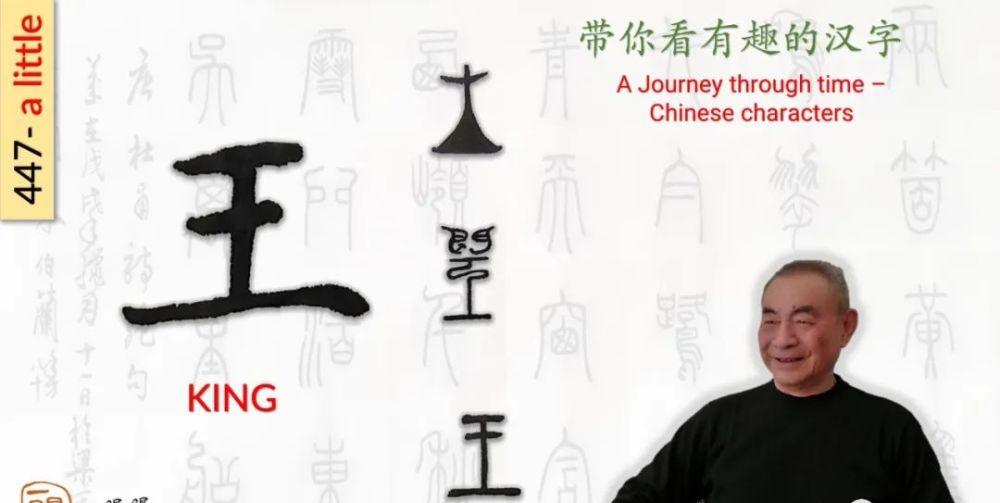The 80-year-old happy old man uses calligraphy
Demonstrate the origin of Chinese characters
Let's talk about the story of Chinese characters with you

Kanji Fun Talk: Wang
"Wang" (wang2), which is a hieroglyph. The word "king" in oracle bones has a variety of different configurations.
There are many different views on the original meaning of the word "wang" in the academic circles,
First, the word "king" in the oracle bone resembles the shape of a male root. Guo Moruo and Tang Han believe that this is the original meaning, without the slightest obscene meaning, indicating that this is the leader of the clan and has the right to take precedence over women.
Second, the word "king" resembles a weapon similar to a large axe held by the supreme general who commanded the army in ancient times. The "king" holder has the command, command, and life and death power of the army, so the "king" gradually evolves into the ruler who controls the highest administrative power of the country.
Third, the "king" is like an upright "adult" with a straight face. It is like the image of a leader or slave owner standing before the slaves.
Fourth, like the shape of "fire" on the fire. clear. Wu Dacheng's "Saying Wen Gu Zhen Supplement": "Wang, Sheng Ye, Daye, from the second from the fire, the ancient fire word, there is fire in the earth, and its qi is also prosperous." Huosheng is known as the King (旺), and Desheng is also known as the King. In addition, "wang" is "past" at the beginning of the text, "king" is like a phoenix crown upside down, and so on.
Judging from the history of the development of human society, the "king" is a long process of gradual transition from "one" to "two". The situation in which ancient humans first competed for the title of "king" was not unlike the situation in which the male monkeys in the monkey groups we see today competed for the monkey king.
The "Wang" character of the Yin Shang Period highlights the "King's Qi" of the Great Axe, and the "Wang" character of the late Zhou and Spring and Autumn Periods still has a block face, and the trend of linearization has become more obvious, and there is a glyph in the Spring and Autumn Period that is carefully designed "art character".
The small seal evolved from a glyph from the late Zhou Dynasty, and was written as "King" after the change.
The word "king" gradually evolved from the priority possession of women in the form of a great axe with absolute power. The "king" (the great axe) symbolizes power, and also means the supreme ruler who leads the tribe to collect and hunt, engage neighboring tribes, rob property, and compete for living territory. Therefore, the supreme ruler is called "king".
Commentary: "Three paintings and even the king of them." The three are heaven, earth, and man, and the king of the one who participates. Confucius said, 'Always three are kings'" This is the product of the "supremacy of kingship" in feudal society and the "unity of heaven and king" preached by Confucianism.
With the passage of time, the "king" was demoted to the highest rank of knighthood. Such as "princes, county kings, princes" and so on.
"King" later also refers to a person who dominates one side or has special skills in a certain field. Such as "Northwest King, Mountain King, Boxing King" and so on.
There is the word "wang sun" in ancient texts, usually referring to the descendants of the royal family, and in the ancient Chu dialect it means "cricket".